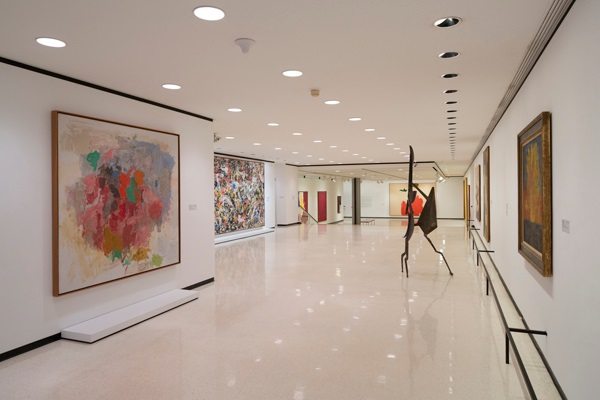
June 29, 2015; Democrat & Chronicle (Rochester, NY)
As part of NPQ’s continued discussion on the evolving role of cultural institutions in society, we turn our attention to the sixth-oldest museum in the country, which is taking its role as an educator to another level. The Albright-Knox Art Gallery located in Buffalo, New York has released an app to help educate younger kids and teens about art history while keeping them engaged.
First developed in 2001, Artgames 2.0 is a reinvented product of the museum’s Innovation Lab in partnership with Empire Visuals, All Things Media, and the International Center for Excellence in Animation at Daemen College to develop eight video games as part of the app. The app capitalizes on the player’s memorization skills and visual literacy while simultaneously teaching the player about the artwork.
The app was designed not only appeal to older players, but also to reflect what children and teenagers enjoy in video games to appeal to younger audiences as well. “It had to be about the game first and foremost; it had to be an engaging game, an entertaining game,” said Russell Davidson, Albright-Knox Innovation Lab and Special Projects Manager. “The education was best if it was found within the game rather than an interruption of the game which we see in other cases.” The app’s eight games are inspired by pieces displayed in the museum, from artists like Vincent van Gogh, Wassily Kandinsky, and Jason Middlebrook.
According to Janne Sirén, who is the first Peggy Pierce Elfvin Director of the Albright-Knox Art Gallery, the app appears to be affecting how younger members of the art-going public view the art:
Sign up for our free newsletters
Subscribe to NPQ's newsletters to have our top stories delivered directly to your inbox.
By signing up, you agree to our privacy policy and terms of use, and to receive messages from NPQ and our partners.
“Now they stop. Now they are studying the painting because two hours earlier, they were balancing it on a screen. Now they can actually see the texture of the colors the texture of the pigment. They now feel a familiar connection to something rather than it being a cold off canvas on the wall. It’s [the] beginning of a learning process.”
The Albright-Knox Gallery isn’t unique among cultural institutions in turning to technology to supplement the experience of going to a museum. However, along with any educational uses, technology has become necessary for libraries and museums as they fight to stay relevant in a society that is almost completely digital.
“Our competition is Netflix and Candy Crush,” not other museums, said Sree Sreenivasan, the chief digital officer of the Metropolitan Museum of Art.
While Albright-Knox may be the only museums that can boast a gaming app, most museums also have their own informational phone apps and social media accounts that interact with their audience. Similarly, the push to digitize collections to make the work more accessible to the public has shifted from a convenience to something becoming expected of cultural institutions.
Museums and libraries will continue to find more varied and creative approaches to nurture greater engagement with the public. Whether using webcam technology to give long-distance members of the public access to the priceless artifacts they otherwise would not have, like the Getty Museum, or using a phone app to allow visitors to ask questions about artwork and receive real-time answers like the Brooklyn Museum, technology has permeated the inner workings of cultural institutions. Indeed, the lack of a coherent technological process and approach at the Boston Public Library illustrates it is no longer a choice to be made, but a necessity for many institutions. How these institutions choose to use technology and their willingness to adapt will reflect their continued levels of success.—Shafaq Hasan













